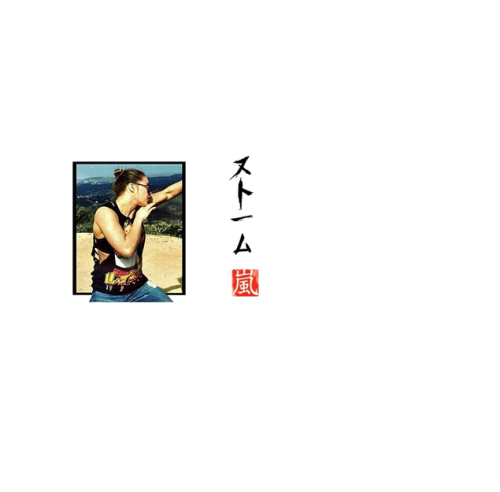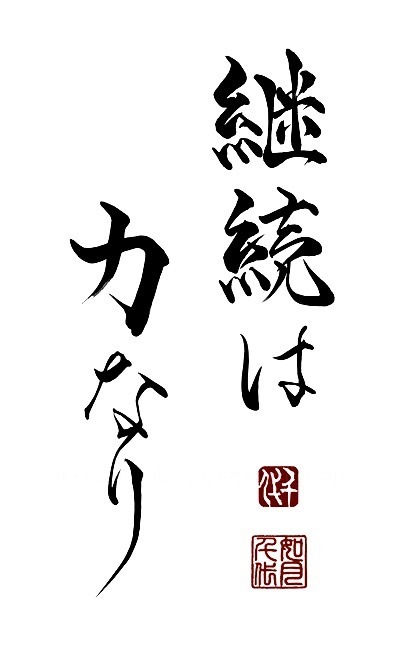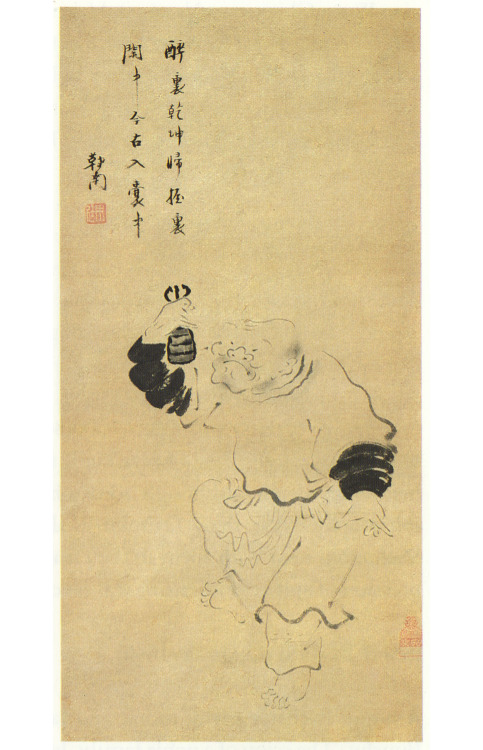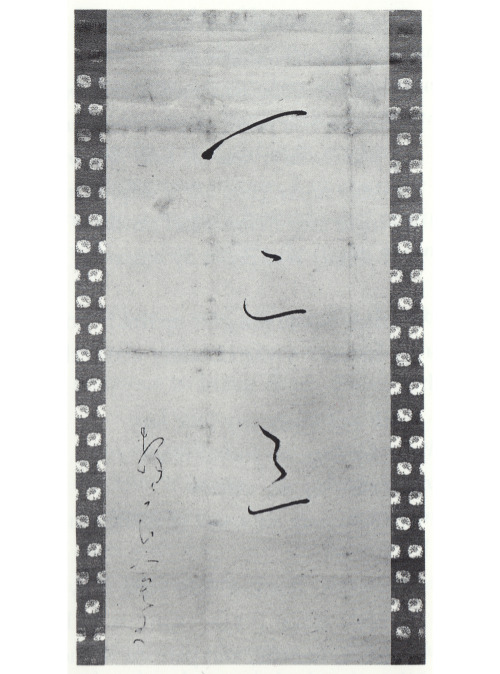#japanese calligraphy

Yin is dark, cold, receptive, magnetic.
Yang is light, hot, giving, active.
Both are present in everything. Day is Yang, Night is Yin. But during a Yang day, one will have periods of Yin rest.
Yin-Yang is also an important concept in Japanese art. In the calligraphy above, outward brush-strokes are Yang and should be painted freely. Inward brush-strokes are Yin, and should be painted tightly.
Even in as mundane an activity as cooking, one finds Yin-Yang. In Japanese cooking, there are Yang knives which are used blade-outwards, and Yin knives which are used blade-inwards. Yin-Yang also applies to the ingredients. The leaves of a plant are Yin, but the roots of a plant are Yang. As with everything, a good balance is necessary.
In the image above I intended to make the “yang” round like the sun. It also resembles an “enso”, a hand-drawn circle which in Buddhism signifies the circle of life.

不 = not
言 = speaking
実 = actually
行 = doing
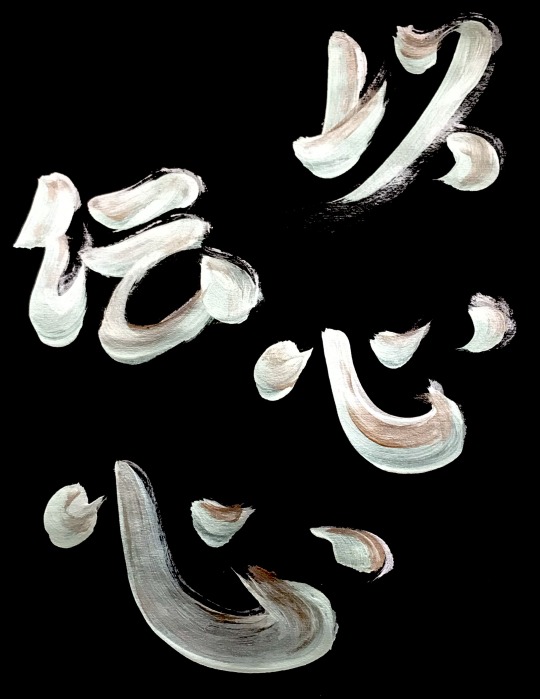
The second and fourth character in this famous 4-character idiom are both 心, which means “heart”. This idiom refers to heart-to-heart communication; speaking without words.
Kaizen is a Japanese term meaning “change for the better” or “continuous improvement.” It is the Japanese business philosophy of continuously improving operations. Kaizen sees improvement in productivity as a gradual and methodical process.
The kaizen concept asserts that there is no perfect end. Everything can be improved upon, and all employees must strive to evolve and innovate constantly.
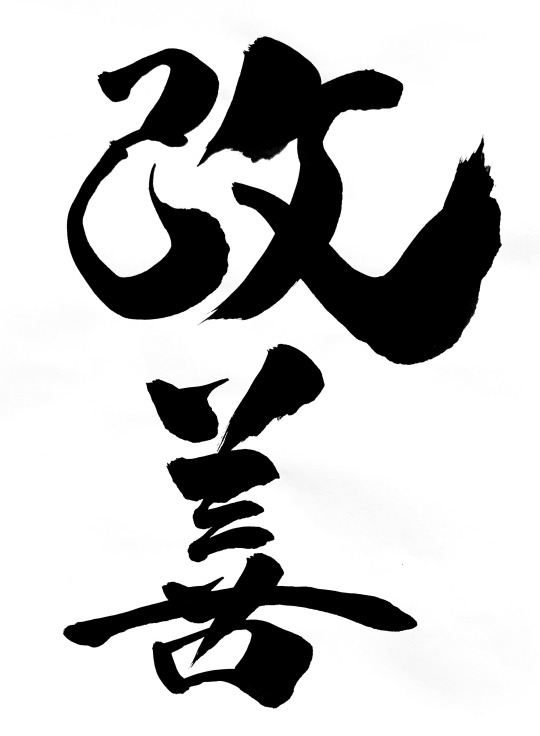
“Gaman” is a zen Buddhist term which loosely translates to “enduring the unbearable with patience and dignity”.
In Japan, putting up with a seemingly unbearable situation is seen as a sign of maturity. In the notoriously tough Japanese workplace, employees are expected to “Gaman” as much as possible.
You can read more about it here:
https://www.bbc.com/worklife/article/20190319-the-art-of-perseverance-how-gaman-defined-japan

七 = seven
転 = fall over
八 = eight
起 = get up
One of my favourite Japanese 4-character idioms!

Cherry blossoms, arguably Japan’s most-loved flower, are at their peak in April. Many Japanese people enjoy taking trips to local parks and tourist hotspots specifically to enjoy the beautiful pink blooms.
One of the reasons they are so well-loved is that they bloom for such a short time. Transience holds an important place in Japanese culture; the more transient an object, the greater its beauty.


This is a “yo-ji-juku-go” (Japanese 4-character idiom), which describes how to live a peaceful yet productive life: work when it’s sunny, and rest when it rains. Doing everything in its proper season.

“Iki” is a Japanese aesthetic ideal. It refers to subtle elegance and sophistication.
One of the aspects of iki is caring about the sensibilities of others. What you wear should make others feel comfortable, and wearing stylish clothing is a way of respecting those around you.
This doesn’t mean that you can’t wear what you want, but neither does it mean that you can’t think about how your appearance affects others. Iki is somewhere in between.
睦月 (Mutsuki) “January"This is the old Japanese name for "January”. “Mu”(睦) means “good relationships”, especially among family members. On New Year’s Day families often stay close and spend time together.

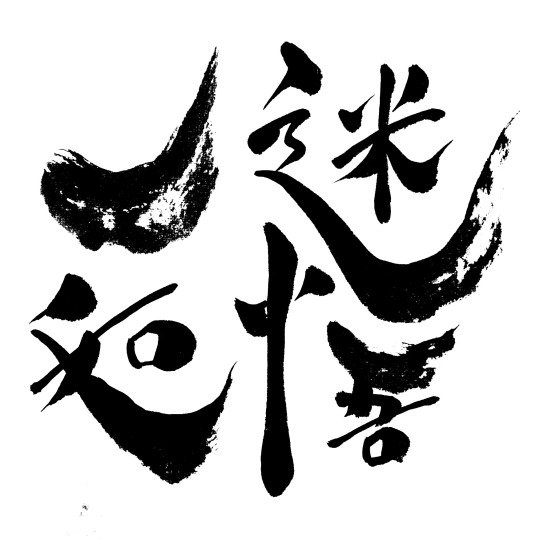
Being confused ain’t necessarily so bad :)
I made this on Photoshop CS6.
‘Way of the grounded Dragon’
Might be a cool title for it. You know, if I had used my own model, original font etc. But seeing as I just did some rendering and played around a bit, it might as well be public property!
Enjoy!
(If you do ever use it, crediting ufcblackbelt.tumblr.com would be appreciated, though!)
Post link
Los japoneses dicen: "Keizoku wa Chikara nari" (La persistencia da sus frutos. No te rindas. Solo sigue intentándolo).
Imagen vía Zen in Technicolor
Post link
A commissioned piece on canvas. Was loosely based on a piece I don’t know the artist of.
Frodo
Calligraphy: Burden
Sumi and watercolor on canvas (watercolor canvas^^)
Post link




